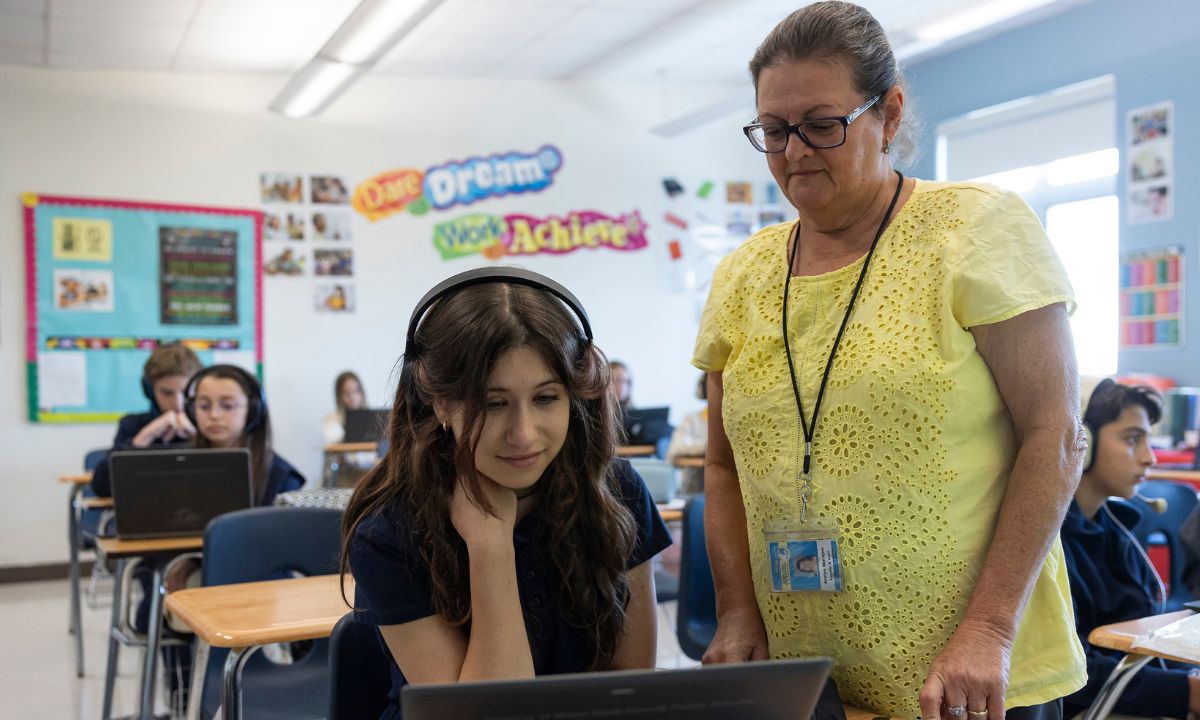How Well Do Middle Schools Prepare Students For HS? Here’s A New Way To Find Out
How Well Do Middle Schools Prepare Students for HS? Here’s a New Way to Find Out
Griffith & Coffey: Using already available data, a HS Readiness Score can provide key information to parents searching for a school for their kids
By David Griffith & Meredith Coffey

This story first appeared at The 74, a nonprofit news site covering education. Sign up for free newsletters from The 74 to get more like this in your inbox.
Education savings accounts in Texas. Open enrollment in Missouri. Each week seems to bring a new story and more education options for American students.
But to make the most of these new opportunities, families need the full picture.
So, what information do they have currently? And what additional data would it make sense for them to have?
When it comes to public schools, whether neighborhood schools, magnets, or charters, the most common data points are academic achievement and year-to-year growth in math and reading, as measured on standardized tests.
Although this information is crucial — something is very wrong if the kids can’t pass the tests — critics from both sides of the aisle rightly note that it doesn’t capture everything that families should want to know about a school’s academics.
For example, what about subjects like history and science, which are tested less frequently than reading and math? What about foreign languages, the arts and other subjects that aren’t tested at all? And what about all the stuff that good schools impart that tests don’t capture, like critical thinking, teamwork, self-discipline and respect for others?
For years, education reformers who believe that data are critical to improving America’s schools but recognize the limitations of standardized tests have struggled to answer these questions. That’s why a recent analysis that explores a new and potentially powerful measure of school quality called high school readiness is so exciting.
As the name suggests, the basic idea is to capture how well a middle school prepares its students for the next stage of their education by quantifying its effects on high school grades—or to be more precise, ninth-grade grade-point averages.
The report finds that middle schools have a significant impact on students’ future grades. For example, in North Carolina and Maryland, attending a middle school with a strong high school readiness score boosted a student’s ninth-grade GPA by approximately one-tenth of a grade point.
Effect of Attending a Middle School with a Higher High School Readiness Score on Ninth-Grade GPA
Note: This figure shows the estimated effect of attending a middle school with a GPA value-added score that is one standard deviation above the average middle school’s score on the average student’s ninth-grade GPA in North Carolina and Maryland.
One-tenth of a grade point may not sound like much, but it’s enough to keep a marginal student out of the University of California or Texas A&M. And that increase is fairly impressive when you consider the number of factors that can affect GPA, from the quality of a student’s elementary school to his or her socioeconomic circumstances and home life.
Pondiscio: It’s Time to End the Testing Culture in America’s Schools — and Start Playing the Long Game to Produce Better Life Outcomes for At-Risk Kids
Importantly, schools’ influences on GPAs aren’t necessarily the same as their effects on test scores. In fact, the two are only weakly correlated.
Middle Schools That Boost Students’ Test Scores Don’t Necessarily Boost Their High School GPAs
Note: This figure shows the correlation between value-added to ninth-grade GPA and value-added to ninth-grade math achievement for Maryland middle schools. Data come from the Maryland Department of Education.
In other words, analyzing middle schools’ effects on grades reveals something new and different about how schools serve students — which the many families who don’t care exclusively about test scores might want to consider when choosing a school.
While it may seem strange to suggest evaluating middle schools based on their students’ high school readiness, many states already do something similar at the high school level, where indicators of college and career readiness have long been an accepted part of school report cards.
And while there are technical challenges associated with isolating middle schools’ effects on high school grades, most states already provide publicly available school report cards, and most already collect data on students’ high school GPAs. So, with a bit of number-crunching and some clear messaging, a new high school readiness indicator could give families the information they’re looking for — and begin to move America’s education system away from its obsession with standardized tests and toward a broader concept of student success.
As educational options expand, so should the information available to families. Test scores alone will never paint a complete picture of school quality or student success. But in the age of big data, there is no shortage of paint.
Category:
User login
Omaha Daily Record
The Daily Record
222 South 72nd Street, Suite 302
Omaha, Nebraska
68114
United States
Tele (402) 345-1303
Fax (402) 345-2351




